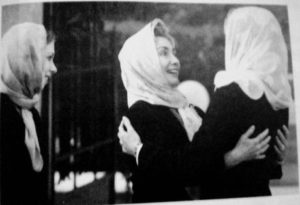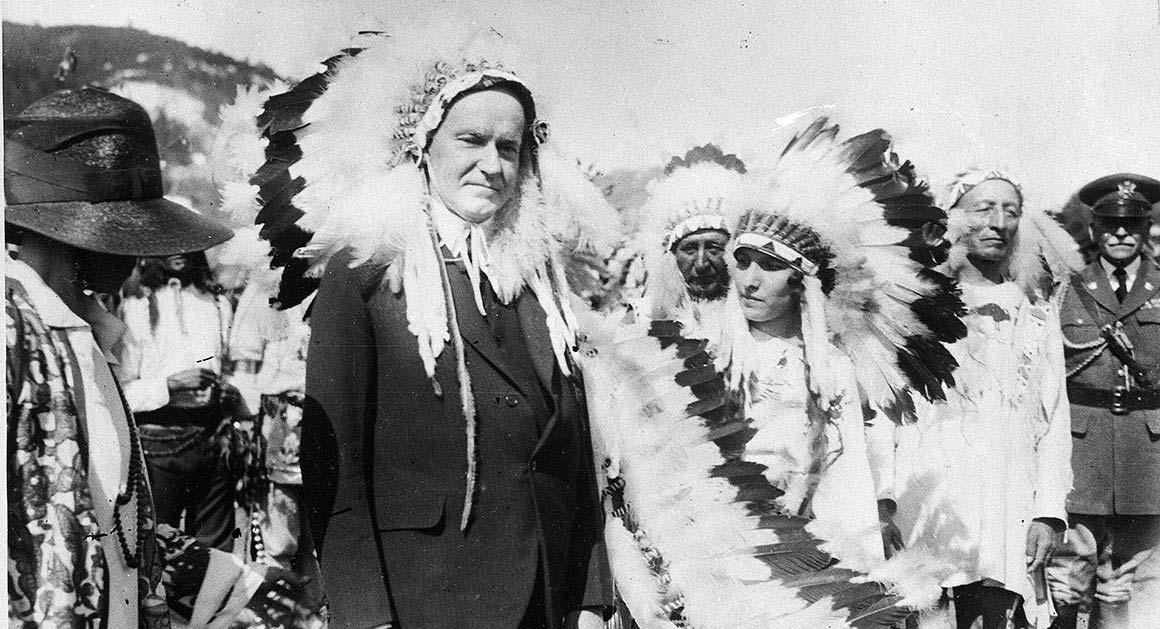A curious phenomenon of our time is the aging rocker. This is not an old piece of furniture but a person frozen in a performance time-warp. Often it is a former headliner trying to recapture the halcyon days of the ‘60s or ‘70s – e.g., the superannuated Mick Jagger, or others like him, rockin’ on far into middle age.
In other cases, aging rockers are individuals who affect – in middle age – a style they never had in their youth. They adopt a faux “hipness,” believing it will help them connect with younger people in some enterprise. The result is often comic, usually absurd.
In schools, some teachers now dress “cazh” (i.e., casual) to show students they are into their scene. Many churches have gone contemporary, too, with ministers and deacons affecting a modish, coatless/tieless style to convince young attendees that they are one with them and can talk their lingo. (What happens when those teens and twenty-somethings realize that the “Rev” and the deeks are just badly dressed old fuddy-duddies is not covered in the “Fighting Young Priest Who Can Talk to the Young” instruction manual.)
As a young person I interacted with many adults in school and church activities. Adults ran sports teams, boy scouts or musical groups that I participated in. To the best of my recollection, not one had a duck-tail hairdo or wore a miniskirt, poodle-skirt, pink shirt, pegged pants or any other youth-style clothing of that era. All dressed and comported themselves in ways appropriate to their ages. Ministers and teachers always wore suits and ties. Female teachers were similarly well turned out, with the possible exception of a female gym teacher in our junior high who pranced around the school wearing a short tennis skirt.
Teachers, church leaders, coaches or directors evinced not the slightest concern over “identifying,” style-wise, with the young people in their charge. (We should have considered any such attempts ridiculous.) Their working premise was that we were there to learn and they were there to teach (or direct or coach). We could listen to them or rebelliously ignore them, as we wished, but their dress or style had nothing to do with our response.
But ours is – connection-wise – a far more hip era. Politicians, notably, seek to identify with their constituencies by wearing outfits they think will make them attractive to voters. Al Gore made headlines in 2000 by retaining a feminist consultant who advised him on how to dress so women would see him as an Alpha Male. He broke new ground (so to speak) by touring the country wearing “earth tones” and deporting himself with a machismo he thought a “real man” would project.
Mr. Gore also made a production out of theatrically smooching his wife, Tipper, on the platform of the Democratic National Convention. This and the earth tones were part of a mighty effort to connect with female voters at some elemental, sexual level. (One wag wondered if Mr. Gore was running for President or Head Stud.) Political analysts say the Alpha Male strategy backfired, however, as majorities of both men and women found Mr. Gore’s contrived macho-image silly.
The political custom of trying to “connect” with constituents has an old pedigree, of course. Abe Lincoln was widely characterized by GOP pols as the log-cabin-born “rail splitter” from Illinois – a reference to his early life on the 1820s frontier. By 1860, of course, “Old Abe” was a successful lawyer who had long-since left his rough-hewn origins. (Lincoln seldom referred to his background, except by telling earthy stories of which he was very fond.)
 Rail-splitter Abe
Rail-splitter Abe
A celebrated 1927 photo shows Calvin Coolidge standing with Sioux Indians wearing a feathered headdress and looking about as comfortable as a horse wearing BVDs.
In 1960, John Kennedy was filmed playing touch football, thus projecting an image of youth and vigor which completely belied his back trouble and affliction with Addison’s disease. (JFK’s health-problems were concealed from the public until after his election.)
In her 2016 presidential campaign, Hillary Clinton affected an exaggerated “black” style of speech that she thought would connect with her minority audience. (“I be in no way tahred…”) Her attempt to bridge the gap between her Wellesley College background and her hoped-for ethnic constituency via a faux Ebonics accent was widely panned. Radio talk-jocks replayed it endlessly. On another occasion she donned a babushka and hobnobbed with Muslim ladies for a photo-op. Some political analysts believe her attempts to make these ethnic connections helped to sink her campaign.
 The Ethnic Hillary
The Ethnic Hillary
Politicians are, of course, notoriously willing to do nearly anything to gain name recognition and attract voters, so their activities should not be used as a benchmark. The current tendency of teachers and church leaders to do so, however, is more troubling. One cannot help wondering if a basic lack of confidence in their message and ability to convey it informs leaders’ modern fashion of trying to look like the people they are trying to teach and reach. Past teachers did not suffer from this lack of confidence.
Occasionally I see old videos (circa 1960) on the Catholic Channel, of Bishop Fulton J. Sheen teaching some theological concept in a classroom setting. He is wearing his elaborate clerical robe and has no teaching accouterments sexier than a piece of chalk and a blackboard. Yet his intelligence, wit and powerful gifts of persuasion and instruction shine through those old black-and-white videos. His teaching about life and the Gospel is still fresh and compelling, six decades later – not because he was dressed in mod clothing, but because he was a gifted teacher whose cup truly overflowed with goodness, grace and charisma.
 Bishop Fulton Sheen
Bishop Fulton Sheen
Likewise, the late Billy Graham always stood in the pulpit impeccably dressed in coat and tie, with only a well-worn Bible in his hand as he declared, “The Bible says…” His powerful presentation and the truth of his message – not modish clothing or style – drew thousands to the Gospel and changed the world.
Young ministers, now preaching sans coat and tie (most of them still wearing long pants), point to the Biblical passage in which the Apostle Paul writes that he is “…all things to all men, that I might by all means save some.”1 The passage is very compelling, and has been used to justify everything from rock-and-roll Praise Bands to pub “beer ministries.”
Paul, of course, knew exactly who he was, what he was doing, and what he was talking about. He knew how to “act” like a Pharisaical Jew because he was both a Jew and a Pharisee. He knew how to act like a Roman because he was a Roman citizen. He could debate the Greeks on their own ground because he was intellectually prepared to do so. He did not affect trappings that were not natural to him. He never compromised his personal integrity or the truth of the Gospel. And he scrupulously avoided practices that might cause his brothers in the faith to “stumble.”
 St. Paul preaching in Athens
St. Paul preaching in Athens
The real question about affectations of dress and comportment is whether they are effective. Are young people really drawn to listen and learn by teachers and ministers who affect ersatz hipness? Bookstores tout books written by people who say this method works. Some are in charge of mega-churches, so one assumes they must really know.
But I wonder about the permanence and depth of these enterprises. How many of those attracted to mod churches or taught by hip teachers obtain faith or learning at a significant level? And how many are simply pass-throughs in the “revolving door” of big churches and trendy schools?
So far, no one has answered these questions. I’m not sure if anyone actually wants to know the answers. Bigness is the thing. Numbers make the case. Today, everyone “knows” that young people simply won’t listen to you unless you look and act like they do.
I wonder if Jaime Escalante2 tried to look like he was fresh from the barrio when he taught those Mexican kids that they could master the calculus. Somehow, I have an idea that he set a higher standard in his dress and comportment, too. His vision was for his students to escape the barrio, not to remain stuck in it.
Me? I’m not a hip kind of guy, and I don’t try to be. When I stand up to sing, I wear a suit and a tie. I consider it a sign of respect for my audience. Besides, it’s who I am. I figure if people are going to listen to me, it will be because I can sing and because the song is good – not because I look like a dude from the ‘hood.
Yo! Maybe I am hip after all. Wasn’t that a poem?
*********
- King James Bible; I Corinthians 9:22
- Stand and Deliver; American Playhouse film release, 1988.

